Sowing Chillies in February - How to Grow Chilli Peppers.
Not too chilly for growing chillies!
You don't need me to tell you that we are having a wet and windy February. So far we have dealt with high winds and heavy rain and, if the forecast is correct, we will be seeing more before the month is out.
I am not particularly bothered by bad weather, it is February after all, but it can make us forget that the start of the season is just around the corner. The days are already noticeably longer and temperatures will soon begin to rise when it will suddenly get very busy in the garden.
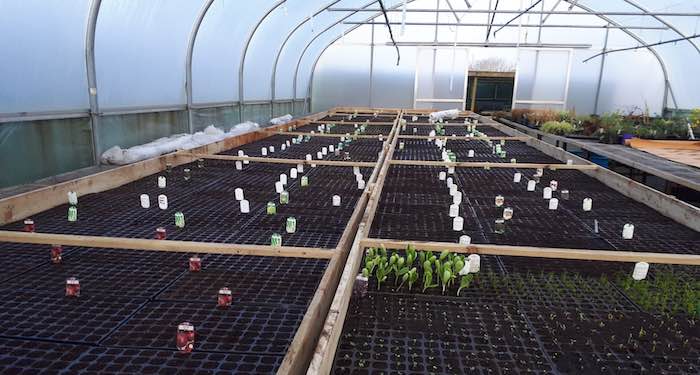
As you can see in the photo above, we have already started sowing seeds on a large scale and will soon have the tunnels covered in a mat of little green seedlings. Obviously we need heat at this time of year to get things going, what you are looking at here is a large heated bench of moist sand which warms the compost in the seedling trays. The white rolls to the left of the benches are rolls of horticultural fleece which we cover the benches with at night to protect from frost and to make the benches more energy efficient.
By the way, if you are thinking of ordering vegetable or flowering plants from us this year you would be doing us as great favour if you could order early. We got caught on stock last year with a big spike in demand and early orders give the nursery a good idea of how much they need to sow.
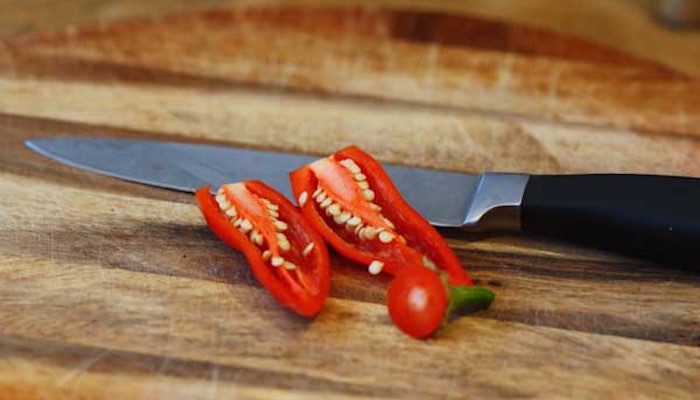
The photo is one of our commercial tunnels but I have also been busy in my own polytunnel this weekend when I sowed chilli seeds of various varieties so I figured that's what we'd talk about this week. There is a bit of fiddling around to do with chillies but once they are settled in there is very little work to growing this interesting crop.
Chilli Seeds It is possible to save seeds from fresh chillies, they are easy to see and remove, but unfortunately the resulting peppers are unlikely to turn out the same as the parent variety. The reason is shop bought chilis are usually grown from F1 hybrid varieties which don't produce offspring true to their parents (but that's another story).
You can save seed from homegrown chillies (provided they are non F1 varieties) but they are likely to have been cross pollinated by other peppers (unless you only grow one variety) so can also yield unreliable results. Given that chilli seeds are a relatively low cost item I figure it's far easier just to order seeds.
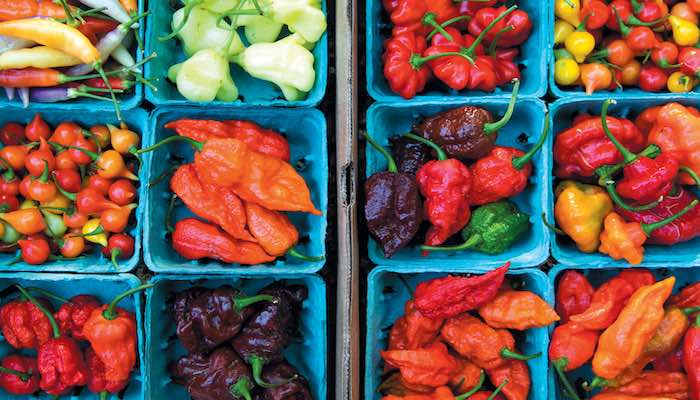
There are plenty of varieties you can choose from with varying size, colour and heat (measured in Scoville Heat Units) so producing your own chillies can be a lot of fun.

Hungarian Wax' Chilli Pepper Seeds
View ProductThis year I am growing Hungarian Wax (Mild), Jalepeno (Hot), Aji Lemon (Hot), Prairie Fire (Hot), Serrano (Medium) and Tabasco (Hot). If you have a screw loose you can try the crazy varieties like 'Carolina Reaper' or 'Trinidad Scorpion' but I'm not big into torturing myself so won't bother. As an example, hot Tabasco peppers are rated at 30,000 Scoville Heat Units while Carolina Reaper score 1,800,000 - 2,200,000 units. Why would you want to put yourself through that?
I also grow sweet Italian pepper 'Marconi' which is very good fresh or preserved in oil and one I have found to be very reliable. I don't grow any other large peppers as we have short summers so they struggle to ripen but if you have a more Southerly garden 'Roberta' is a very good choice.
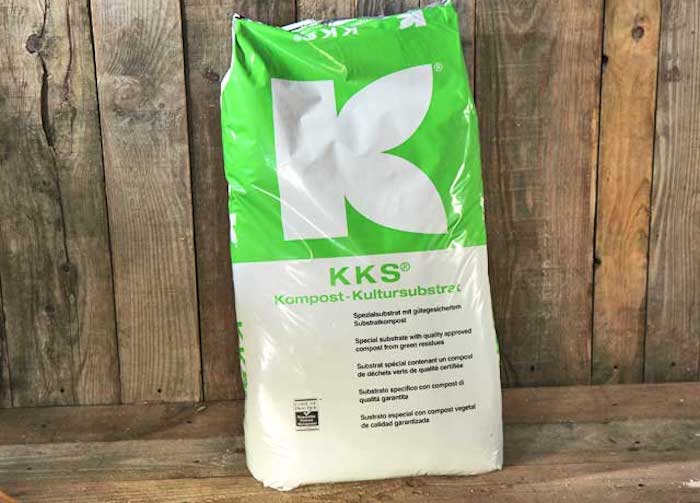
Sowing Chillies Chillies need to be sown in February (or by mid March at the latest) because they need a long season to ripen. It is best to start off seeds in modules using a good seed compost like the Klasmann featured above and then pot them on to a larger pots. Usually this is done twice before finally planting them in May. Unless you have a very warm Southerly garden (and even then you will struggle), chilis are not suitable for outdoor growing and will need to grown in a greenhouse, polytunnel or a sunny South facing window.
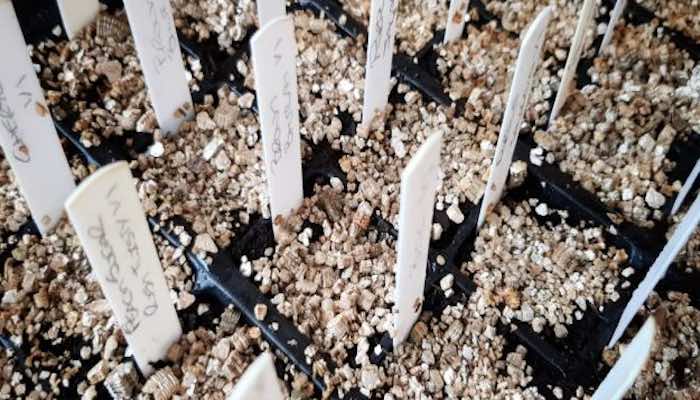
Seeds can be sown in a seed tray or pot at 2cm apart and covered with a 1cm layer of fine vermiculite. Chillies seeds must be kept moist in the early stages but, as they are slow to germinate, fungus can be a problem and kill the seeds. Using vermiculite as a covering helps because it retains moisture while also creating air spaces between the grains which makes fungal growth less likely.
Chilli seeds will germinate at 18-20˚C but results can be patchy. 28˚C is about ideal and should give the most even hit rate. For this reason you are best to use a heated propagator to give an accurate temperature reading. At a pinch you could also use a radiator or airing cupboard but the plants must be removed to a bright South facing windowsill the moment the come up.
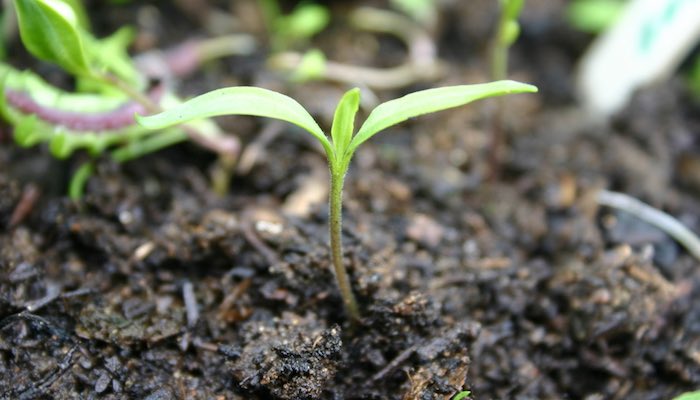
Potting On Once your seeds have germinated a good tip (which I got from Alys Fowler) is to water the seedlings with warm water which speeds up growth. Once the young plants are showing 2 sets of well formed leaves they should be carefully pricked out and re-planted in 7cm pots containing a good quality seed compost.
To prick out seedlings, loosen the compost under the root with a dibber or pencil while gently tugging the leaves to free the plant. The seedling should be re-planted in the fresh compost at the same level as it was in the seed tray. After a further four weeks (or when the roots are growing out of the drainage holes) the chili can be potted on to a larger 10 -12cm pot.
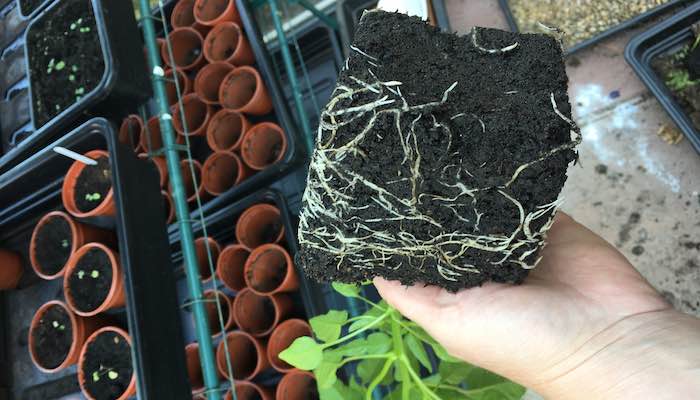
Planting out and plant care As we've said, chillies need plenty of warmth and sunshine to ripen so are best grown in a greenhouse or tunnel. Depending on how early or late spring is, the plants should be planted to their final positions in early to late May. The planting distance is 45cm between plants and 45cm between rows.
Chillies can also be grown in pots for their full life cycle, the size of the pot is governed by the variety. For compact, ornamental varieties a 20cm pot is fine, for larger plants you will need a 30cm pot.
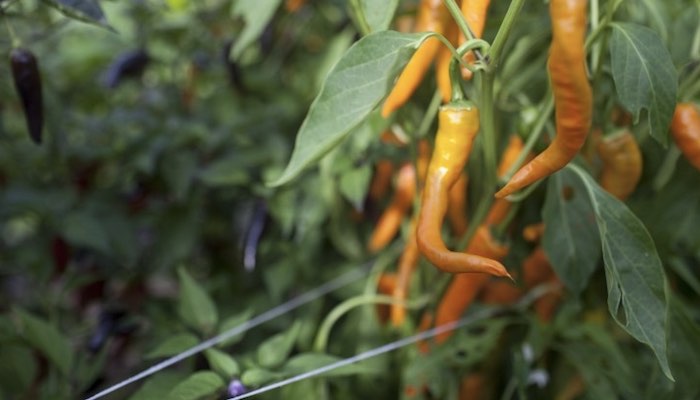
Feeding and caring for Chillies If chillies are planted into well a fed, fertile soil they will need very little feed. If, when the first fruit has set, the plants aren't thriving you can feed every two weeks with a good seaweed based tomato feed. What you need to avoid is a high nitrogen feed as this will cause vigorous leaf growth at the expense of the fruit. Keep plants evenly watered, never letting them dry out. If fruit fails to set in hot weather, humidity is likely to be the issue and can be resolved my misting the plants with water.
If plants are growing tall without thickening out your can pinch out the main growing tip when they reach 30cm; this encourages the plant to become more bushy. It is also a good idea to stake plants with a light cane or support with twine to prevent them toppling over when heavy with fruit.
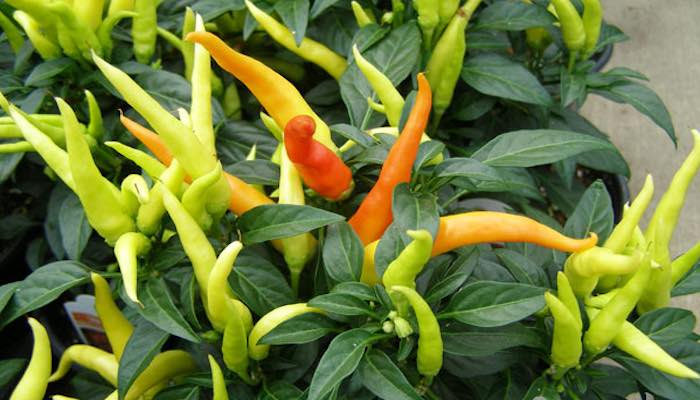
Harvesting All chillies start off green before ripening to their final colour. Chillies can be harvested when green if you like them a little less hot or left to ripen and achieve their full potential.
You should be able to harvest from July until October, any left at this stage can be dried and will keep well for 12 months. In won't got into all the things you can do with chillies but suffice to say that apart from the usual culinary uses chillies can be used to make chilli oil and can be pickled orb preserved in a myriad of delicious ways.
That's it for now, I'll see you next week!
Andrew
